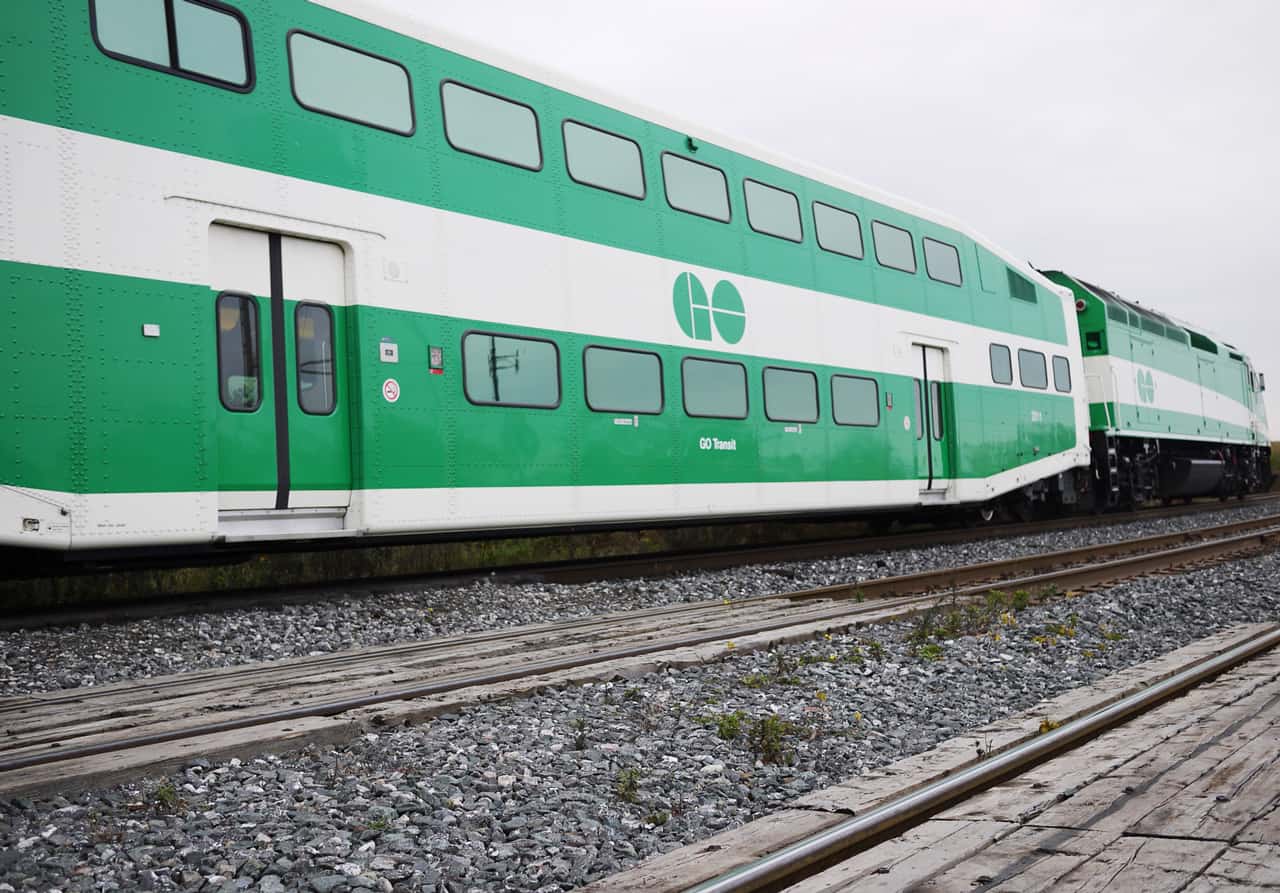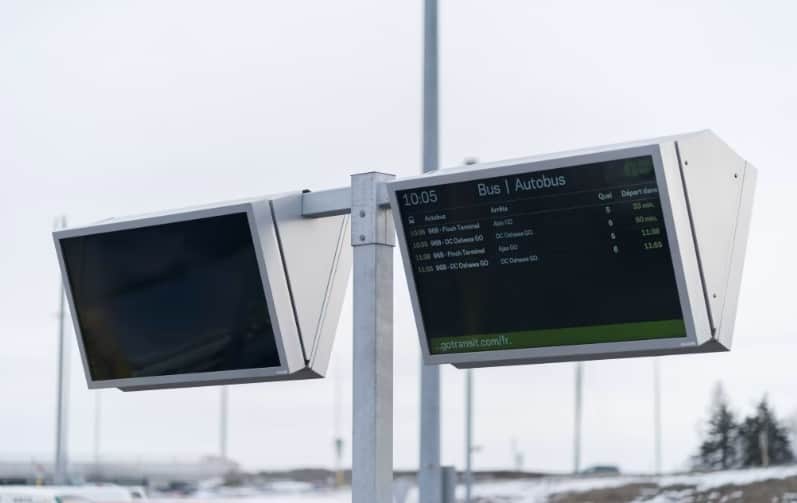22 GO stations in Mississauga, Hamilton, Halton and Oshawa show 335 signs of improvement
Published February 27, 2023 at 12:02 pm

GO train passengers in Mississauga, Hamilton, Halton, Oshawa and elsewhere across Ontario are reading the signs–literally–when it comes to familiarizing themselves with some of the latest upgrades to the huge public transit system.
As part of a multibillion-dollar, multiyear plan for a “total transformation” of the GO train network from Toronto to Mississauga and Hamilton, new “early station improvement” projects have been completed, transit officials say.
Metrolinx, the provincial agency that runs GO, said in an update this past Friday (Feb. 24) that all “early” projects have now been finished at 28 GO stations.
The most noticeable among the upgrades, officials note, is the installation of 335 new digital signs at 22 GO stations. The signs make it easier and faster for passengers to get information about GO services and schedules, Metrolinx officials say.
GO stations with the new digital signs include:
- Milton Line: Erindale, Lisgar and Streetsville (Mississauga)
- Lakeshore West Line: Appleby (Burlington), Oakville and West Harbour (Hamilton)
- Lakeshore East Line: Oshawa, Ajax, Pickering, Whitby, Scarborough and Guildwood
- Barrie Line: Bradford, Newmarket
- Kitchener Line: Acton, Guelph and Mount Pleasant
- Richmond Hill Line: Gormley, Old Cummer
- Stouffville Line: Centennial, Mount Joy and Stouffville
Officials say that in addition to the digital signs, Whitby and Appleby GO stations will now benefit from new electrical rooms “to improve reliability and prepare for increased service.”
After more than three years of steady work, Metrolinx says, the early station improvement projects have “laid the groundwork to successfully move forward with the largest transit capital infrastructure program in the province’s history.”
The early upgrades are “a key part of GO expansion to enhance and maintain the safety and accessibility of our existing stations while GO prepares for major work that will bring improved service along core segments of the GO rail network over the next 10 years,” transit officials add.

Metrolinx, along with fledgling company and successful project bidder ONxpress Transportation Partners, announced last summer that they were starting into the “development phase” of the massive expansion plan that’s expected to greatly improve passenger rail service for millions of commuters across the Greater Toronto and Hamilton region.
“Throughout this two-year phase, the teams will work together to finalize the project scope, pricing, design and construction schedules. This stage is all about establishing a foundation,” Metrolinx officials said.
Metrolinx calls the long-range plan “an unprecedented transit expansion” in the region–stretching from Toronto and Mississauga west to Hamilton.
“When it’s done, this won’t be your parents’ GO train anymore,” Metrolinx officials said earlier. “GO expansion will bring two-way, all-day GO train service across the main GO lines. There will also be faster trains and service every 15 minutes or better. It’s a project that will change the way people use transit in Canada’s most populated area.”
A new fleet of electric GO trains that can reach speeds of 140 km/h is also part of the plan that will get people around the region faster.
The sweeping expansion plan is also expected to generate thousands of new jobs and create economic opportunities across the region, Ontario transportation ministry officials said earlier.
The project will include adding more than 200 kilometres of new track and electrifying some 600 kilometres more.
Construction will begin this year, with the first major service upgrades to be launched sometime in 2025 or 2026.
GO rail is expected to become one of the busiest railways in North America, with more than 200 million annual riders anticipated by 2055.
INsauga's Editorial Standards and Policies